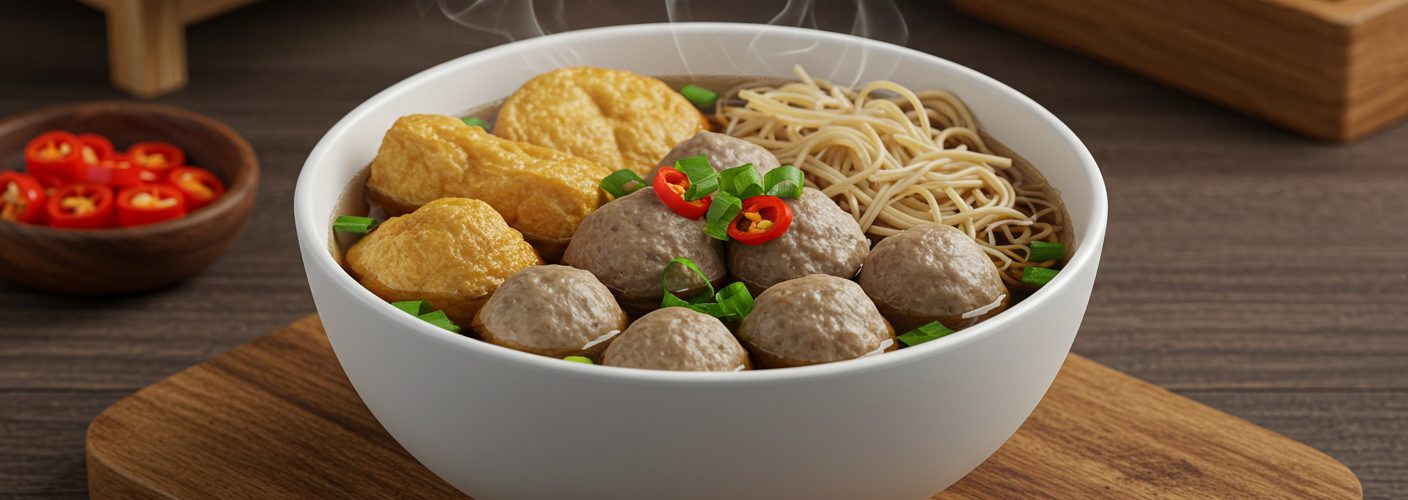When it comes to popular street food around the globe, few dishes can compete with the beloved Indonesian bakso. This savory meatball, made primarily from beef surimi, has become a staple for both locals and travelers looking to experience authentic Indonesian flavors. But what exactly is bakso, and what makes it so special? Let’s delve into this unique culinary creation.
What is Bakso?
Bakso is a traditional Indonesian meatball, characterized by its soft and chewy texture. The primary ingredient is beef surimi, which is a refined form of minced beef that has been processed to remove fat and connective tissue. This gives bakso its desirable elasticity and allows it to maintain its shape when cooked. Sometimes other ingredients like tapioca flour or starch may be added to enhance the texture, creating a meatball that is both tender and firm, perfect for soaking up sauces and broths.
While bakso is traditionally made from beef, variations can include chicken or fish, catering to diverse dietary preferences. No matter the variation, the preparation process generally remains the same, emphasizing quality ingredients and meticulous craft.
Culinary Versatility
One of the remarkable aspects of bakso is its versatility. It can be found served in various ways, making it adaptable to different tastes and contexts. In Indonesia, bakso is often served in a flavorful broth alongside noodles, vegetables, and garnishes like fried shallots or scallions, creating a hearty dish that’s perfect for any meal of the day. Additionally, it can be skewered and grilled, making for a delightful street-food option that’s easy to eat on-the-go.
Another popular variation includes bakso served in a spicy sauce, complemented by sambal or chili paste. This adds a tantalizing kick to the dish, appealing to those who enjoy bold flavors. It’s not unusual to see an array of toppings such as fried tofu or eggs, adding even more texture and depth to the dish.
Cultural Significance
Bakso is more than just a delicious dish; it holds a special place in Indonesian culture and social gatherings. Whether enjoyed at local streets vendors, found in restaurants, or served at family gatherings, bakso often brings people together. The communal nature of sharing a big bowl of bakso reflects the warm hospitality typical of Indonesian culture, inviting everyone to enjoy the meal together.
In recent years, bakso has gained international popularity, spreading beyond Indonesia and enticing food lovers in various countries. Food stalls and restaurants dedicated to this iconic meatball can now be found in major cities worldwide, showcasing its growing reputation as a global delicacy.
The Health Perspective
Aside from its delicious taste and cultural significance, bakso can be a relatively healthy option when made with lean beef or alternative proteins. The nutritional profile varies based on preparation and serving style, but when balanced with vegetables and broth, it can provide a wholesome meal. It’s an excellent source of protein and can be enjoyed guilt-free when one is mindful of portion sizes and accompanying sides.
Conclusion
In summary, bakso is not just a meatball; it is a reflection of Indonesian culture and ingenuity in cuisine. With its roots deeply embedded in tradition and its future brightened by global appreciation, bakso is a dish that everyone should try at least once. Whether you find it in an intimate street stall in Indonesia or a trendy restaurant across the globe, indulging in this beef surimi meatball is sure to be a memorable experience.




Add comment